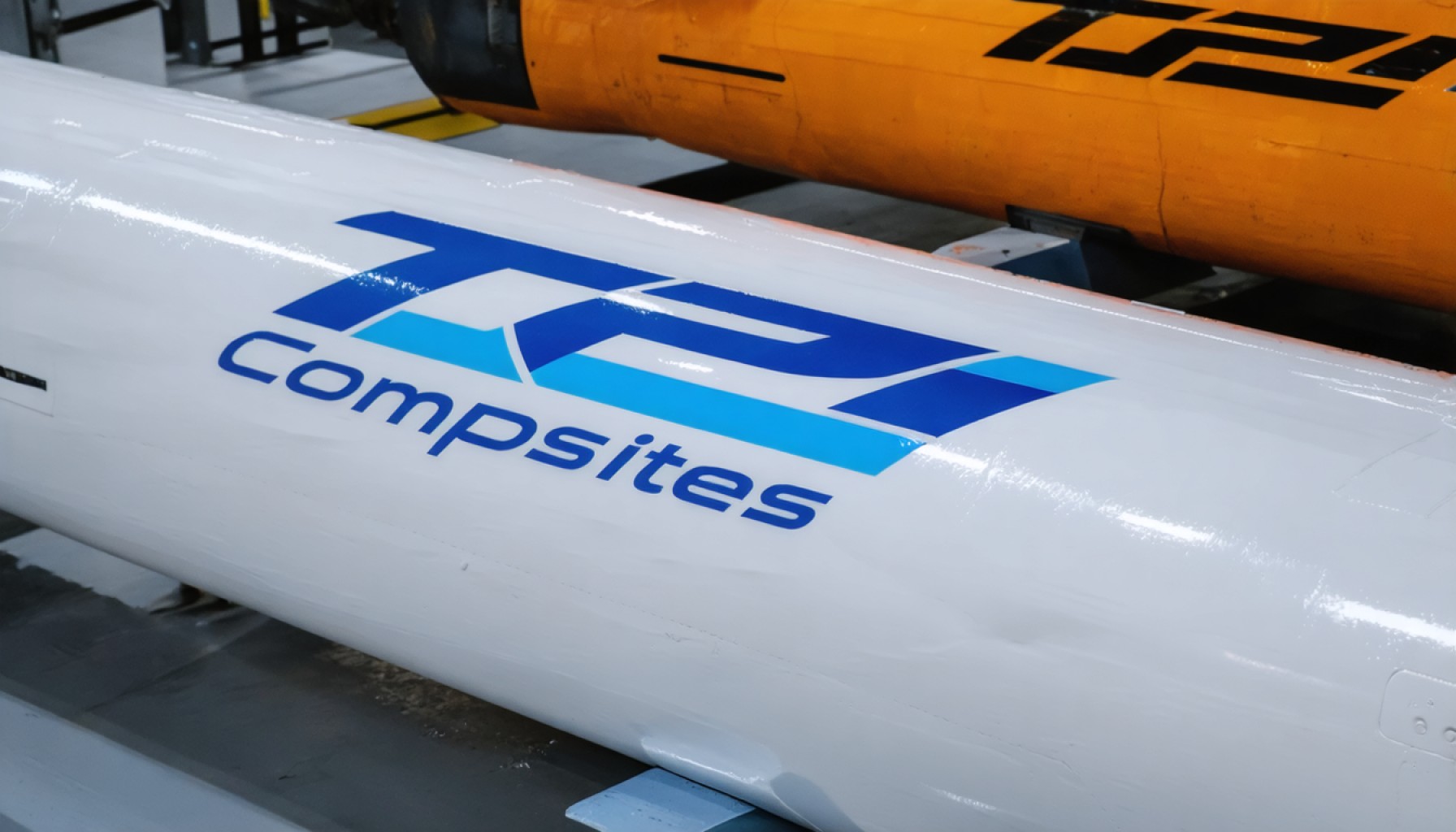- TPI Composites saw a 16.7% revenue increase to $346.5 million but missed Wall Street expectations.
- The company faces challenges with a negative 6.4% operating margin this quarter, highlighting ongoing profitability issues.
- TPI is pivoting with divestments in its automotive sector and focusing on next-gen wind blade designs.
- The transition carries risks amidst macroeconomic uncertainties and investor cautiousness regarding renewable energy investments.
- TPI’s future revenue guidance targets $1.45 billion for 2025, indicating possible modest growth.
- Innovation and adaptation are crucial for TPI’s success in the evolving renewable energy landscape.
- The company’s ability to harness green energy potential will determine its long-term viability and success.
Amid the relentless drive toward renewable energy, TPI Composites stands at a crossroads, clawing for traction in a world swiftly moving away from fossil fuels. While its revenue climbed an encouraging 16.7% over the past year, reaching $346.5 million, the figures fell short of Wall Street’s hopes. Analysts had set their sights higher, and the gap revealed TPI’s footing to be more tentative than triumphant.
The global wind blade manufacturer, headquartered in Scottsdale, Arizona, faces a dual-edged challenge—meeting evolving energy needs while steering through a financial quagmire. The company’s operating margin remains a concerning negative 6.4% this quarter, a stark reminder of the profitability struggles that have long hounded it.
Yet, the industry whispers of change. TPI’s recent strategic maneuvers—divesting its automotive business and pushing toward next-gen blade designs—paint a picture of a company poised to navigate future winds. However, this potential pivot comes with risks, shadowed by lingering macroeconomic uncertainties and the hovering specter of investment jitters over renewable energy projects.
Investors and analysts alike ponder the long game: Can TPI Composites defy its recent past of dipping sales and mounting losses? The company enters 2025 with revenue guidance of $1.45 billion, hinting at modest growth in future quarters, albeit shy of analyst predictions.
The takeaway? With green energy’s tide rising and regulatory winds shifting, TPI must innovate fearlessly or risk being anchored by legacy costs and unfulfilled aspirations. As renewable energy evolves, only those companies adept at harnessing its potential will thrive. While TPI Composites presents a curious case of missed estimates and subtle growth, its journey through the coming fiscal landscape will be pivotal. Will it catch the next wave or remain drifting in its own wake? Only time will tell.
Is TPI Composites the Under-the-Radar Winner in Renewable Energy?
Market Forecasts & Industry Trends
The renewable energy sector is primed for growth, buoyed by global policies pushing for reduced carbon emissions and sustainable investments. By 2030, the wind energy market is expected to significantly expand due to technological advancements and increased capacity demand. The International Energy Agency forecasts offshore wind to become a $1 trillion industry by 2040.
TPI Composites, a key player in this arena, is uniquely positioned to capitalize on these trends. Their focus on next-gen blade design could prove pivotal as offshore wind farms increasingly rely on larger, more efficient turbines. This trend underscores the importance of innovation in driving market dominance.
Real-World Use Cases
TPI’s products primarily serve utility-scale wind energy providers, such as GE Renewable Energy and Vestas. These partnerships are vital, providing TPI with contracts for turbine blades, a core component of their revenue stream. These collaborations highlight TPI’s role in facilitating the shift to renewable energy.
Moreover, TPI Composites’ divestment from automotive and reinforcement in wind energy aligns with market demands, exemplifying a strategic pivot that could be advantageous for long-term growth.
Pros & Cons Overview
Pros:
– Innovative Designs: TPI’s next-gen blade technology offers improved efficiency and longevity.
– Strategic Focus: Streamlining operations to concentrate on wind energy could drive future growth.
– Industry Partnerships: Strong relationships with major OEMs ensures stable contract flow.
Cons:
– Financial Struggles: A negative operating margin indicates ongoing profitability challenges.
– Market Volatility: Macroeconomic factors and supply chain disruptions could impact operations.
– Investment Pressure: Underperformance relative to analyst expectations may reduce investor confidence.
Controversies & Limitations
TPI Composites encounters competition from companies capitalizing on government subsidies and newer technology. While layoffs or cost-cutting measures haven’t been publicly announced, restructuring pains could emerge as challenges.
Security & Sustainability
TPI Composites continues to explore sustainable manufacturing practices. This involves minimizing waste during production and fostering recycling initiatives for obsolete blades. However, industry-wide, the sustainable disposal of composites remains a challenge.
Reviews & Comparisons
In the competitive manufacturing space, TPI Composites is frequently compared to manufacturers like Siemens Gamesa and LM Wind Power. While Siemens and LM boast more robust financials, TPI’s innovative blade design positions it well in niche technology advancements.
Features, Specs & Pricing
TPI Composites specializes in large-scale turbine blades. Although specific pricing is proprietary, these high-efficiency components require significant capital investment, reflecting the upward trend in renewable project expenditures globally.
Insights & Predictions
Analysts suggest cautious optimism for TPI’s future, contingent on successful cost management and innovation strides. As regulatory incentives for renewables strengthen, TPI’s focus on next-gen development could lead to a competitive edge.
Concluding Actionable Recommendations
For stakeholders or potential investors:
– Monitor Strategic Shifts: Track TPI’s new ventures and any updates on their next-gen blade designs.
– Evaluate Partnerships: Consider the impact of any new contracts with major OEMs.
– Financial Management: Watch for improvements in operating margins and any strategic financial restructuring.
For individuals interested in renewable energy stocks:
– Consider diversifying investments to mitigate risks tied to single companies like TPI.
– Stay informed on industry trends and government regulations influencing market performance.
For more information about TPI Composites, visit their official website.











